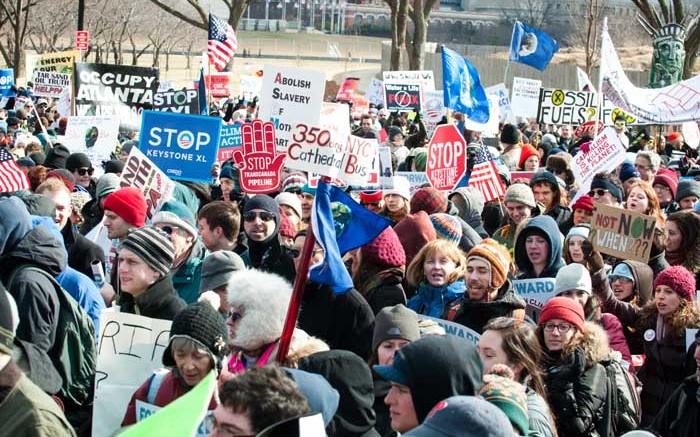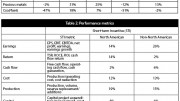VANCOUVER — In its four-year journey through the permitting process, the Keystone XL pipeline has become a symbol of America’s reliance on oil. And those who oppose the pipeline have framed the U.S. government’s upcoming yay-or-nay decision as a pivotal moment in America’s environmental history. But as the debate drags on after yet another government decision delay, it is clear that politics and polarized views are obscuring some realities.
Keystone XL is a proposed pipeline that would carry 830,000 barrels a day of diluted bitumen from the Alberta oilsands to a hub of oil storage tanks in Cushing, Okla. From there the southern half of the pipeline — a domestic entity that has already been approved and built — could move the product to the army of heavy oil refineries on the Gulf Coast.
And there is an army of such refineries in Texas, because refiners invested billions of dollars last decade to upgrade their facilities to process all the heavy, sour crudes the U.S. was importing from Venezuela and Mexico. Today, however, production in those nations is dwindling, leaving America’s heavy oil refineries fighting for — indeed, paying a premium for — limited heavy oil supplies.
Oilsands bitumen is the ideal product to fill that gap. For the U.S., Canada would be a stable source of needed oil from an ally. And Keystone XL is the most efficient way to move that oil to the U.S.
Environmentalists disagree, arguing three main points. The first is that a bitumen-filled pipeline is an accident waiting to happen, an immense risk to sensitive ecosystems. Second, they posit the oilsands produce the dirtiest crude on the planet, and the U.S. could slow or even halt oilsands development by refusing to buy such dirty oil. Third, they believe bitumen, discounted as it is against other crudes because of its lower quality, encourages America’s use of oil.
Those countering these arguments have become stuck in a quagmire. The oilsands are now as contentious as nuclear energy or fracking — and have attracted as many celebrities opposed to them. Retired South African Archbishop and Nobel Peace Prize laureate Desmond Tutu was the latest to speak out against Alberta’s bitumen, describing it as “filth” and the drive to produce it as “negligence and greed.”
But for every such celebu-knock against the oilsands, there is a counter.
“Oil powered the jet that flew Mr. Tutu to Canada from Africa, produced the fuel for the helicopter tour he had planned of the oilsands, and helped manufacture the microphones and TV cameras for his press conference,” TransCanada (TSX: TRP; NYSE: TRP) said in a news release. “Without oil we wouldn’t have fertilizers to grow our food, plastics for surgical tape and heart valves, and gasoline to start the more than 250 million cars in North America every morning.”
That defends oil, but there are Keystone-specific arguments as well. In fact, the three main anti-Keystone positions can be reversed so completely as to make them pro-pipeline points.
On the question of pipeline safety: yes, several recent and badly managed pipeline leaks in North America have made it seem pipelines are unreliable.
However, the opposite is true. Pipelines are the safest way to move crude oil. Ships can sink, trucks can crash, and trains can derail — and that final possibility has sadly played out three times in the last two years precisely because a dearth of pipelines has encouraged energy companies to ship oil by rail.
Between 2012 and 2013 oil-by-rail shipments in North America jumped 75%. In that same timeframe three major derailments highlighted how dangerous trains filled with oil can be, including the Lac-Mégantic explosion in Quebec that killed 47 people.
Pipelines, by contrast, do not generally explode. They also do not emit carbon gases. And while new pipelines are not infallible, they are much less likely to leak than the majority of the pipes currently carrying oil around North America, which are old. Forty-one percent of the oil pipelines criss-crossing the U.S. were built in the 1950s and 1960s. Another 15% are even older.
The next argument is that if the U.S. doesn’t buy Canada’s bitumen, oilsands development will stall. But energy analysts agree: bitumen will find its way out of Canada whether Keystone exists or not. The U.S. Department of State came to the same conclusion in its final environmental impact statement on Keystone XL, noting even severe pipeline constraints were “not enough to curtail most oilsands growth plans or shut-in existing production.”
Moreover, the anti-oilsands stance is based on bitumen being the dirtiest kind of crude on the planet, but that is simply not the case. For example, crudes from Venezuela’s Orinoco fields are likely on par with bitumen in terms of carbon intensity. Crudes from Nigeria — where more than 500 billion cubic feet of natural gas co-produced from oil wells is flared every year, and where oil spills and oil-related human rights problems are rampant — are even worse.
The third argument is that Canadian crude, discounted as it is against other crude oils because of its lower quality, would encourage America’s “oil addiction”. That is a red herring. The U.S. uses oil for energy, plastics, pharmaceuticals, and a long list of other basic goods. Any reduction in usage will take decades.
In the meantime America needs a secure source for the 40% of its oil requirement that it still imports. Without an oilsands pipeline, America will remain reliant on less stable, more expensive suppliers.
The cost factor deserves a deeper look, too. Completing Keystone XL would likely lead to lower gasoline prices, which would aid an American economy that is still struggling.
The retail price of gasoline is based on benchmark crude oil prices. The two leading global benchmarks are West Texas Intermediate, which describes the crude held in those massive storage tanks in Cushing, and Brent, which is nominally oil from the North Sea, but the term is used more broadly.
For years WTI and Brent were almost the same, with WTI holding a slight edge because of its lighter, sweeter quality. Events in 2011 disrupted that pattern: the Arab Spring reduced Brent supplies (particularly from Libya) and burgeoning production from U.S. shale oil fields boosted WTI supplies.
Brent pricing started to climb above WTI. That difference was amplified as rising production bottlenecked in Cushing and had no way of getting to the Gulf Coast for refining.
As a result, after sitting just above Brent for years, since 2011 WTI has averaged US$13 per barrel less than Brent.
The spread has lessened recently, with WTI closing US$6.50 below Brent on June 2. The reason: the glut at Cushing has been somewhat eased now that the reserved Seaway pipeline and the southern leg of Keystone XL are both moving oil to the Gulf Coast.
But the Gulf Coast’s refineries need heavy oil, not just the lighter, sweeter kinds being pumped out of North Dakota’s shale fields. Moreover, Seaway and southern Keystone aren’t enough — a glut of oil persists in Cushing, and so WTI remains depressed relative to Brent. As a result, America’s army of heavy oil refineries are stuck paying extra for Brent-benchmarked heavy oil supplies.
That extra cost is being passed along to consumers. The U.S. Energy Information Administration estimates that the oil price makes up 55% of the gas price. As such the absence of Keysto
ne XL is translating directly into higher prices at the pump for U.S. drivers.
All these pro-Keystone arguments have created support for the project. A recent Pew Research poll found 61% of Americans support the pipeline, with 27% opposed and the rest undecided. And while 84% of Republicans support the pipeline, support is almost bi-partisan: 49% of Democrats also favour approving Keystone.
North of the border, the federal Conservative Party strongly supports the pipeline. Prime Minister Stephen Harper called approving the project a “no-brainer” and has expressed frustration over the delays in U.S. permitting.
The anti-Keystone minority, however, is vocal. They have also framed the decision as the biggest environmental moment of President Obama’s tenure. As a leader who likes to be seen as a steward of nature, Obama finds making a decision politically impractical. Instead, Obama found it less politically risky to announce sweeping new emission regulations on coal-fired power plants.
And so the Keystone delays continue. A normal permitting timeline would have produced a decision two years ago, but it now seems Obama will skirt the issue entirely. Instead TransCanada will likely have to wait until a new president is in office in January 2017, for a decision.
U.S. energy security, oil transportation safety, and lower gas prices will just have to wait.





Be the first to comment on "Commentary: Keystone XL – When politics obscures priorities"